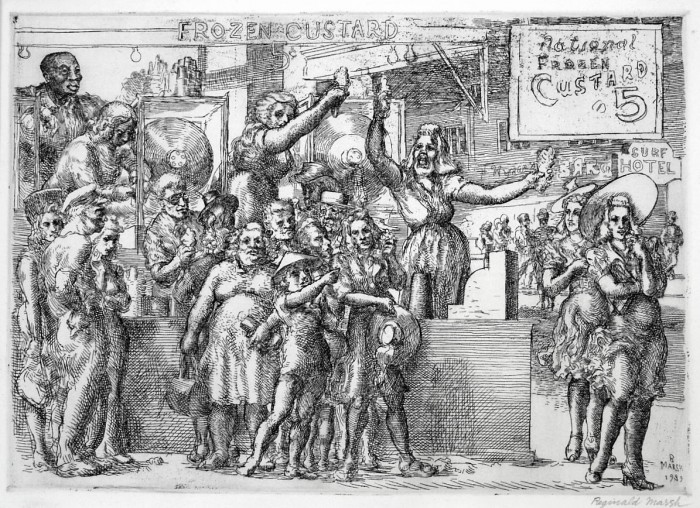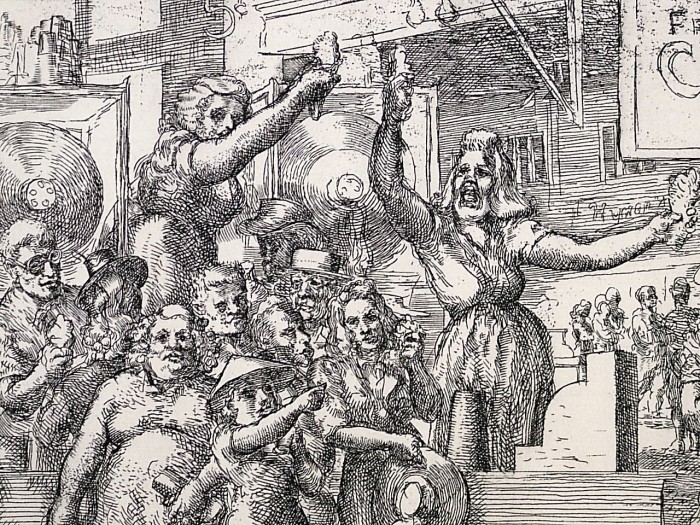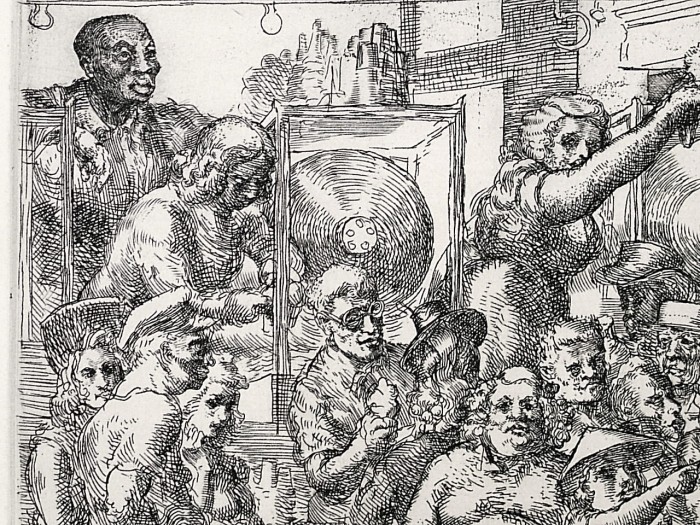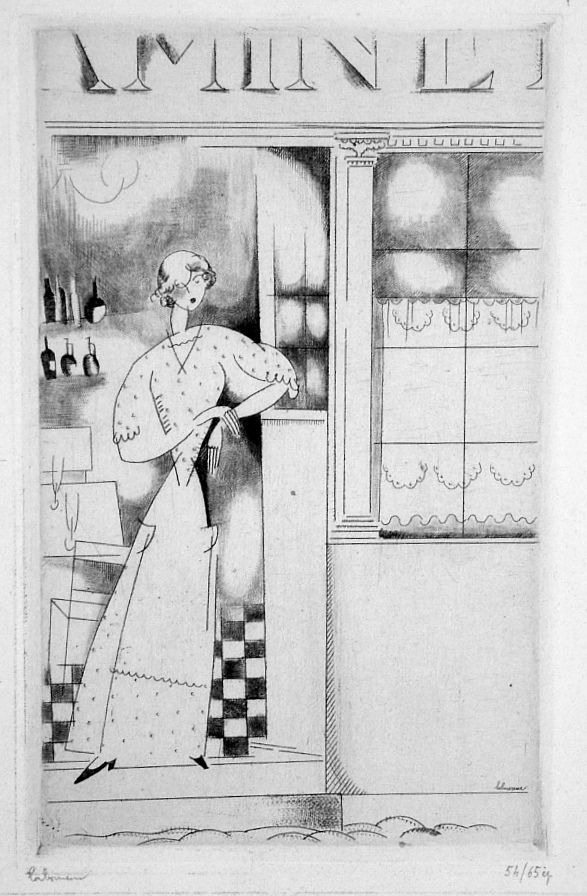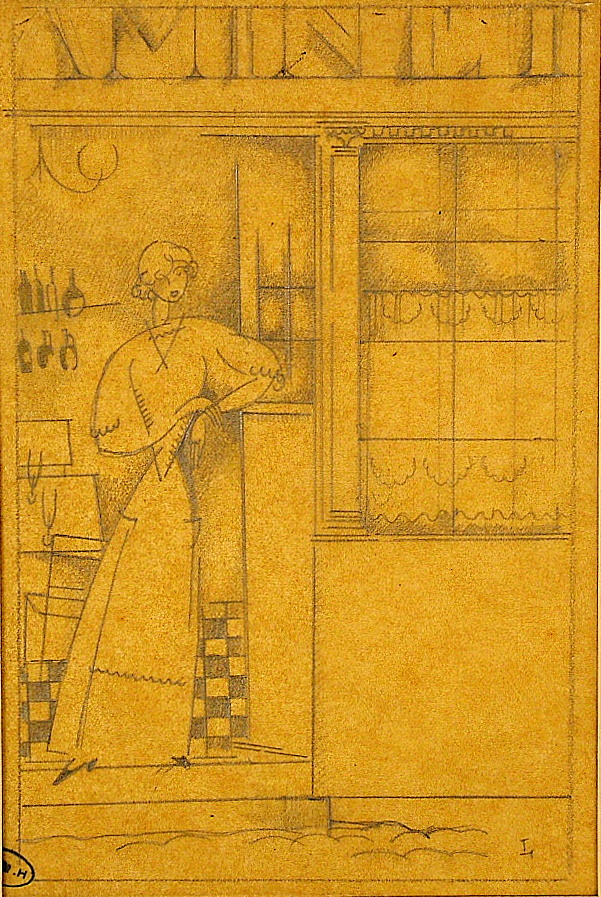Frozen Custard
Tuesday, June 29th, 2010Reginald Marsh (1898-1954), Frozen Custard, etching, 1939, signed in pencil lower right margin [also signed and dated in the plate lower right]. Reference: Sasowsky 183, second state (of 2). From the total printing of 18 in this state (there were 2 first state proofs). In excellent condition, with margins (some rippling in bottom margin, printed by the artist and trimmed by him slightly irregularly (as was his custom), printed on cream laid paper, 7 1/8 x 9 7/8, the sheet 8 3/4 x 11 3/4 inches.
A fine fresh and crisp impression.
A painting with the same design but quite different details is in the Benton Collection.
The composition of Frozen Custard is curious. With the exception of a woman buying a custard from the man in glasses toward the left, the crowd within and surrounding the custard stand all appear to be looking toward the viewer, perhaps the artist or a photographer, or some spectacle on the Coney Island boardwalk. A child in front points to something, further suggesting that the crowd is looking at something other than the artist or a photographer. The composition is similar to Rembrandt’s Ecce Homo, except for the absence of a central figure, but this is made up for by the two woman in the booth holding frozen custards aloft, as if they were objects of worship.
